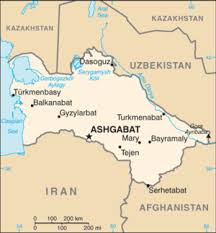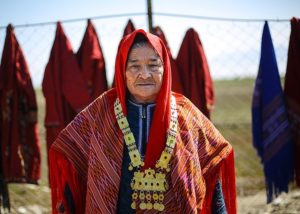 Persian Jews began to immigrate from Iran to Turkmenistan in the late 1830s. Fleeing persecution, they settled in the Turkmenistan cities of Mary, Yoletan, and Baram-Ali. A large number of Ashkenazim came from the Ukraine during World War II. At its peak in the 1980s, the Jewish population in Turkmenistan was 2,500.
Persian Jews began to immigrate from Iran to Turkmenistan in the late 1830s. Fleeing persecution, they settled in the Turkmenistan cities of Mary, Yoletan, and Baram-Ali. A large number of Ashkenazim came from the Ukraine during World War II. At its peak in the 1980s, the Jewish population in Turkmenistan was 2,500.
In Turkmenistan, the last synagogue was torn down at the time of the fall of the Soviet Union. The Jews there manage to carry on, operating with no rabbis or houses of worship as no synagogues are permitted in Turkmenistan. Even a gathering of Jews is fraught with danger.
 The Turkmen Jews have no semblance of a community and the majority are non-practicing and do not usually disclose their religious origin due to severe religious persecution. Jews are without employment. If they wish to undertake higher education, they must bribe the proper authorities to gain admission. Almost totally, the Jewish community is dependent on outside funds, most coming from Israel.
The Turkmen Jews have no semblance of a community and the majority are non-practicing and do not usually disclose their religious origin due to severe religious persecution. Jews are without employment. If they wish to undertake higher education, they must bribe the proper authorities to gain admission. Almost totally, the Jewish community is dependent on outside funds, most coming from Israel.
Today, approximately 700 Jews live in the country, primarily in the capital, Ashkhabad. There are also communities in Turkmenbashi, Mary, and Dashoguz. A tiny group of Bukharan Jews lives in Turkmenabat, a village on the border with Uzbekistan.